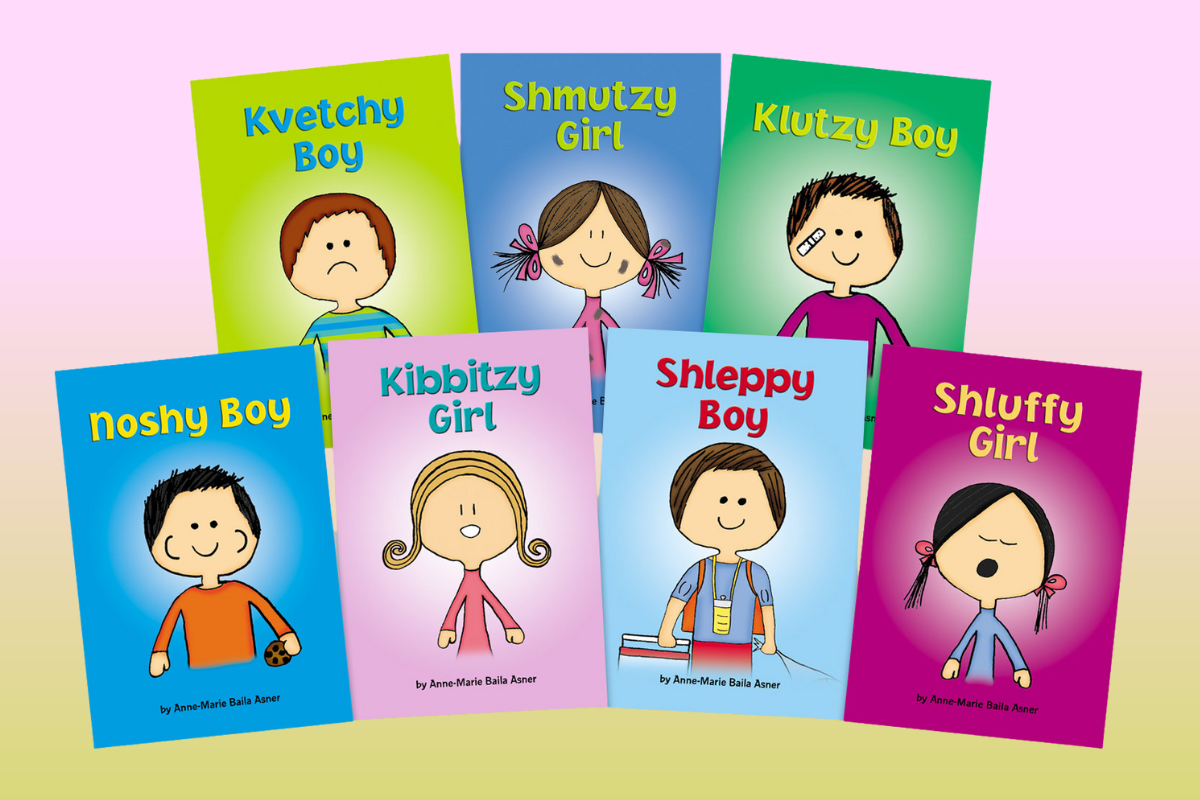The other day I was driving up from Orange County to home in Los Angeles when out of nowhere, I suddenly remembered the Matzah Ball Books. There was no specific impetus to the memory; it just wandered out of nowhere. The second I put the car in park, I beelined to my bookshelf. After thoroughly destroying the recesses of my shelves (and if I’m being honest, the surrounding area), I couldn’t find them. I started second guessing myself. Were these perfect children’s books a wishful imaginary artifact I created as a young child? I finally went on the internet to discover that they did exist, but it seems that I might have been one of only a handful to read them, given that there are so few reviews. If I didn’t have specific memories of picking up the books at a local Los Angeles Jewish museum then I would be convinced that they simply weren’t real, a fever dream after all.
At this point, you’re either nodding along joyfully, or you’re completely confused. If you didn’t happen upon these in your local Jewish museum like I did, let me get you up to speed. The Matzah Ball Books are a series written by Anne-Marie Baila Asner that center around a singular character with a characteristic described with a Yiddish word. There have been additions to the collection in recent years, but the “OG” ones that my family always loved included “Noshy Boy,” “Schmutzy Girl,” “Shluffy Girl” and “Kvetchy Boy.” Now, many years after I first discovered them, there are eight picture books in the collection with “Kibbitzy Girl” finishing it up — and there might be more to come as “Keppy Girl” is advertised on the website!
The books all center around that specific character who is frequently interacting with another one of the “boys” or “girls.” In the interest of broadening my horizons, when I started walking down memory lane I didn’t pick up one of my old favorites. I instead opted for the more recently published “Kibbitzy Girl.” If we’re being completely honest, I actually related to her the most.
The book opens by introducing Kibbitzy Girl who is “very chatty and loves to joke around” and her friendship with “Keppy Girl” (keppy is an endearing way to say “head” in Yiddish). As you may imagine, while Kibbitzy Girl loves to chat, Keppy Girl wants to study and learn. When Keppy Girl rebuffs Kibbitzy Girl in class one day, Kibbitzy Girl runs into “Schleppy Boy” in the hallway. He tells her that if she wants to impress, she ought to do the talent show because, as he puts it, “kibbitzing is [her] talent.” Buoyed by this news, Kibbitzy Girl goes home “to make a list of her silliest kibbitzes.” She even practices in front of her brother, “Kvetchy Boy,” to see if it made him happy. She saves all of her kibbitzes for the show and has the whole talent show laughing! Kibbitzy Girl realizes that her kibbitzing is a gift. After the show, Keppy Girl comes to her and explains that it isn’t that she doesn’t love Kibbitzy Girl’s kibbitzing, it’s just that she needs to learn in class! Kibbitzy Girl understands, and the two move forward in their friendship, good as new.
These books all end with a lesson. For Schmutzy Girl, she learns that if her schmutziness is bothering other people, maybe it should be addressed. Noshy Boy learns that he should maybe make healthier eating choices. Shluffy Girl learns that not every time is nap time and maybe it’s only worth it to sleep when you’re actually tired. Schleppy Boy learns that if you spend so much time being prepared, maybe you’re not actually spending time with the people that you love.
As I researched these books, I kept on coming across one main point of praise for the series: the Yiddish emblazoned on the front cover. I majored in history, so in addition to just generally bemoaning the state of the world (tag yourself, I’m Kibbitzy Girl!) I’m often thinking about what has been lost and I am often concerned that Yiddish might soon be added to the “dead languages” list. Though it is frequently used in the Haredi community — where many consider Hebrew too holy to be used in casual conversation — the common use of Yiddish of only a couple of generations ago is waning. But the reviews of these books praise them for the simplicity of the Yiddish added in the texts. In “Kibbitzy Girl,” the definition of the Yiddish is never explicitly stated. It is meant for the child (or the reader of any age) to quickly make the connection between the multiple text bubbles in the illustrations and the opening line: “Kibbitzy Girl is very chatty and loves to joke around.” The connection is seamless and though there are certain words in Yiddish that have become commonplace even among those that aren’t Jewish, these books fill in some of the lesser known words.
I love peppering “farkakte,” “altacocker” and “fresser” as I kibbitz in conversation, but there is something comforting about seeing these books with the Yiddish on their cover in a bookshop. Though these books are meant for children (and the childlike at heart), I was happy to have remembered them, and genuinely moved to learn more Yiddish from their simple stories. So if you’re looking for encouragement from someone other than Duolingo to learn Yiddish, might I suggest The Matzah Ball Books?



